Radiant Solutions Heat Tape Products
Buying Guide
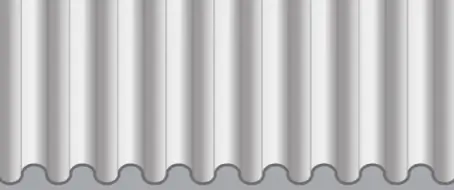
Heat Tape for Corrugated Metal Roofs
Protecting Your Corrugated & R-Panel Metal Roof from Ice Dams
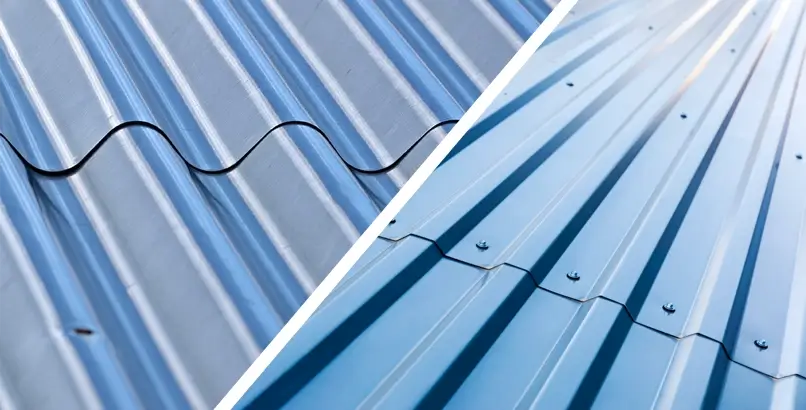
Corrugated & R-Panel roof are popular choices for metal roofs. They are highly cost-effective, typically one of the most affordable metal roofing options, yet offer longevity and durability often considered superior to asphalt shingles.
Corrugated Metal Roofs and R-Panel/Trapezoidal Metal Roofs belong to a family of metal roof systems that employ large panels with no special implement on raised seams. Instead, the raised ridges are integrated into the panel shape in a continuous manner. By overlapping the panels, the raised ridges act to deter the flow of water beyond the roof surface.
Like any roof, corrugated and R-Panel style metal roofs are not immune to the formation of ice dams.

Identifying Your Corrugated Metal Roof
A corrugated metal roof is visually distinct and relatively east to identify. Its defining characteristic is its extruded wave-form shape, with no straight lines. Corrugated sheet metal panels used on roofs in North America come in limited variations, with the depth from peak to valley varying from ½” to 1” typically and the peak to peak distances of 2-3” and are installed with screws along each panel seam from the eave to the peak. Corrugated sheet metal roofs are primarily made of factory enameled steel or aluminum but also can also be made of core ten steel and copper. Panels are typically 26″-36″ wide and overlap, with a typical length between 12-24 feet.

Identifying Your R-Panel Metal Roof
Sometimes referred to as a “Trapezoidal” metal roofs, R-Panel Roofs are similar to corrugated metal roofs in how the panels work and are installed. R-Panel roofs are popular all across North America, in particular on outbuildings, barns and commercial buildings. R-Panels are typically 36” wide and are fastened along the panel seams with screws from the eave to the ridge or fastened directly through the ‘flats’ between the ribs using gasketed sheet metal screws. Unlike the graceful sign wave profile of corrugated panels, the profile of trapezoidal panels are more angular, often with the spaces between the larger peaks interrupted with smaller, low-profile ribs in the space between peaks.
Heat Tape Pro
For Your Corrugated or R-Panel Roof
Heat Tape Pro is the #1 Heat cable system in the world to protect your Corrugated or R-Panel metal roof from ice dams. It is UL-Listed for use on all metal roof types. There are many heat tape brands being used that are NOT approved for metal roofs so this is an important distinction. Heat Tape Pro can come in direct contact with any metal surface without risk of shorting out or causing damage to the surface below. Our heat tape has an industry-best 10 year warranty and a team of heat tape & ice dam experts, ready to help you with your installation.
When used with our extensive ecosystem of installation roof clips, Heat Tape PRO™ is unmatched when it comes to ice dam prevention on standing seam roof systems.
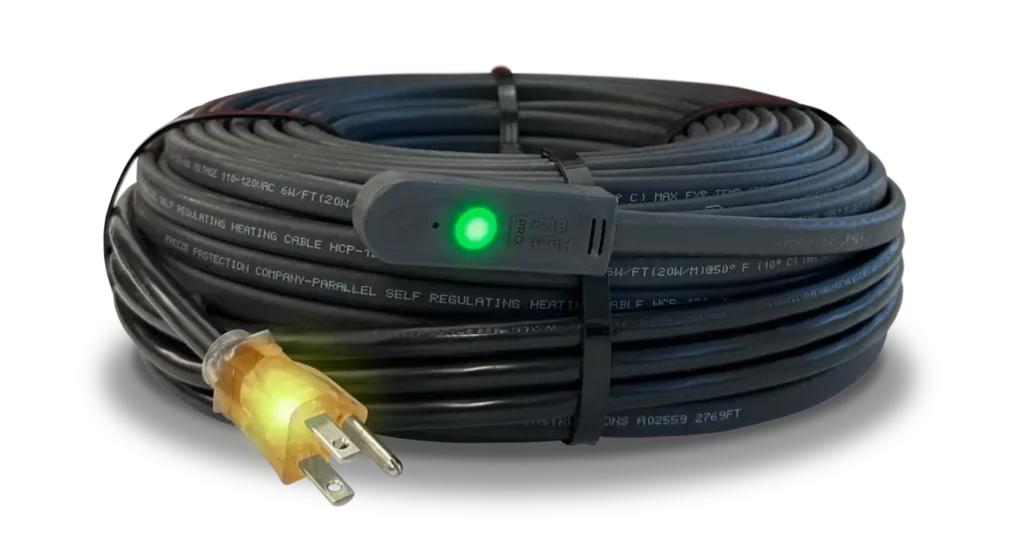
JS-222 Metal Roof Clips
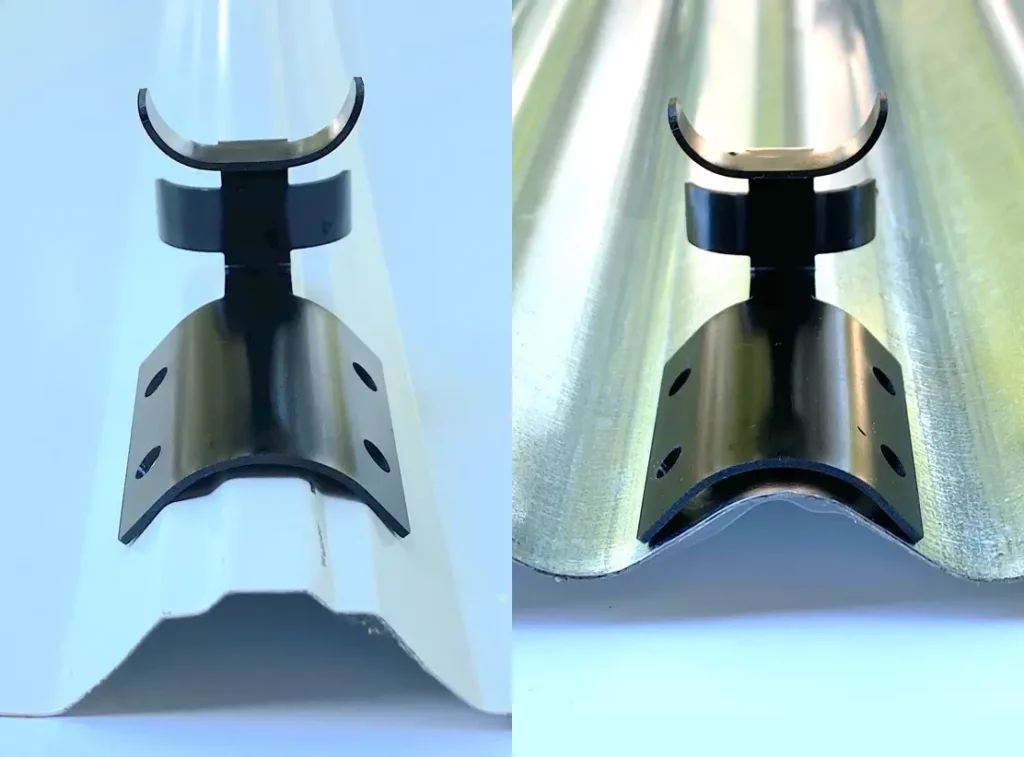
The Clips
The JS-222 Corrugated Metal Roof Clip are designed to work with the rounded profile of corrugated roofs, as well as the angular profile of R-panel / trapezoidal roofs.

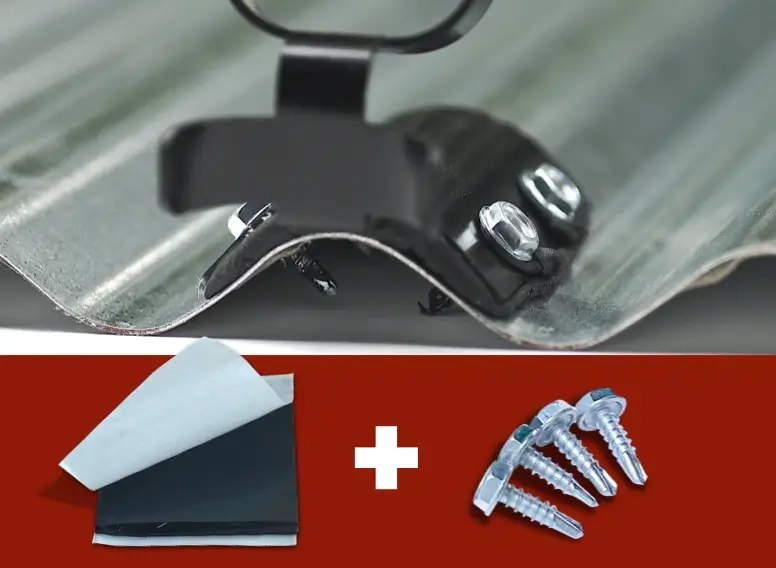
The Sealing Pads
Using Butyl Pads with your metal roof clips, will provide a seal for fasteners perforating the raised peak of the panel.
The Fasteners
If you are opting to use fasteners to maximize the strength of your secured clip to your standing seam roof, we recommends a standard sheet metal screw.
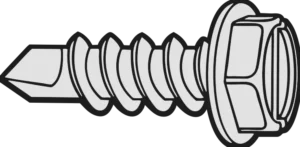
Shop JS-222 & Related Accessories
-
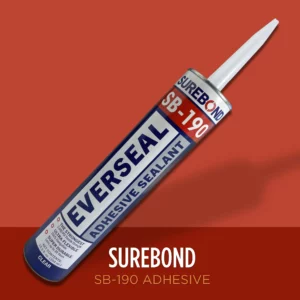
Roof Clip Adhesive Surebond SB-190
$12.99 – $149.99Price range: $12.99 through $149.99 This product has multiple variants. The options may be chosen on the product page -
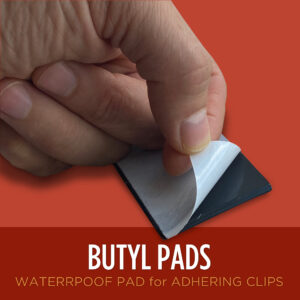
Butyl Pads – Clip Sealing Pads
$7.50 – $15.95Price range: $7.50 through $15.95 This product has multiple variants. The options may be chosen on the product page -
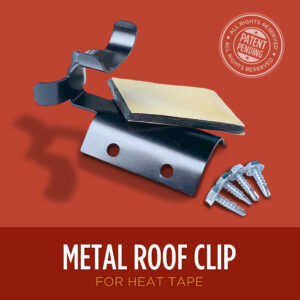
Metal Roof Clips for Heat Tape
$26.95 This product has multiple variants. The options may be chosen on the product page
What About Gutters?
Protecting Your Gutters & Downspouts
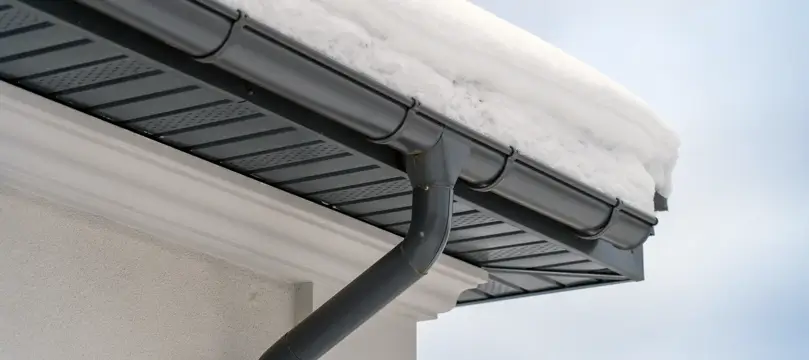
Regardless of what type of roof you have, you may have gutters installed. If you are using Heat Tape to mitigate a problem with ice buildup on your roof, you will also need your heat tape system to allow the water from the melted snow and ice to flow away from your roof.
By using heat tape in your gutter, you create a channel that allows this water to escape your roof and down your downspouts. Learn more about gutters, heat tape and ice dams via the links below.
Snow Retention Systems
Heat Tape with a Snow Retention Installed
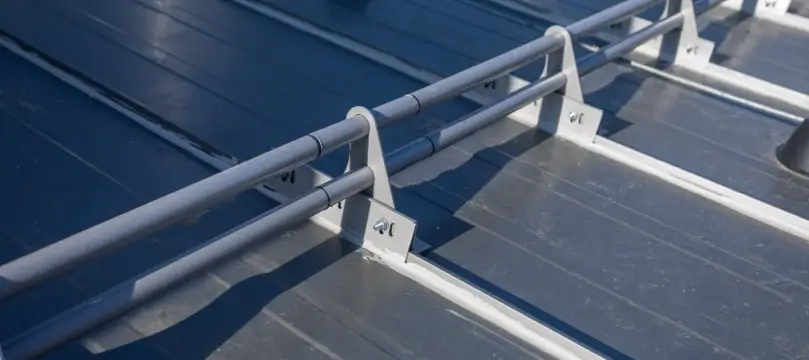
Often times, metal roofs –and in particular standing seam roofs– will have a component installed a few feet about the roofs edge that is designed to prevent an avalanche of snow from sliding off the roof and potentially causing damage or harm to something/someone below.
If your roof has a similar component, considerations should to be made for your heat tape installation so the effectiveness of either part is not compromised.
